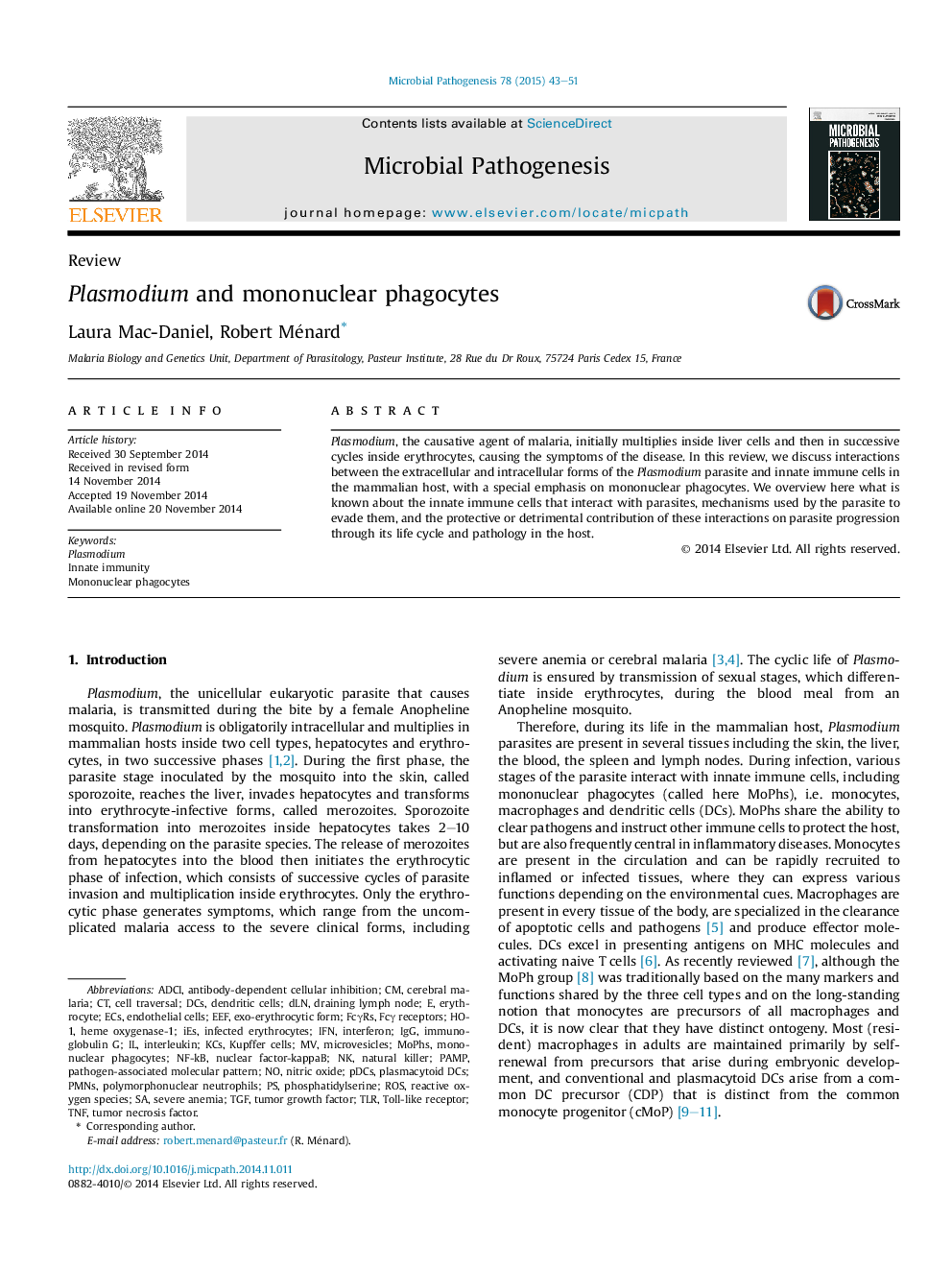| Article ID | Journal | Published Year | Pages | File Type |
|---|---|---|---|---|
| 3416547 | Microbial Pathogenesis | 2015 | 9 Pages |
Abstract
Plasmodium, the causative agent of malaria, initially multiplies inside liver cells and then in successive cycles inside erythrocytes, causing the symptoms of the disease. In this review, we discuss interactions between the extracellular and intracellular forms of the Plasmodium parasite and innate immune cells in the mammalian host, with a special emphasis on mononuclear phagocytes. We overview here what is known about the innate immune cells that interact with parasites, mechanisms used by the parasite to evade them, and the protective or detrimental contribution of these interactions on parasite progression through its life cycle and pathology in the host.
Keywords
Related Topics
Life Sciences
Immunology and Microbiology
Microbiology
Authors
Laura Mac-Daniel, Robert Ménard,
